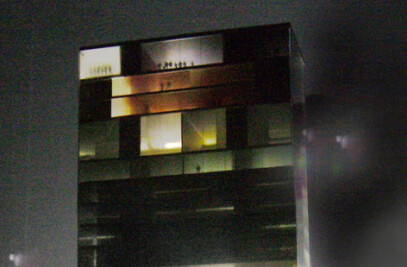The redevelopment of the Belvédère area links up with Maastricht's policy for the next 20 years to develop into a regional commercial centre. Belvédère will host 4000 new homes and knowledge- and service-based businesses. The Sphinxkwartier Masterplan, located within this area, presents a big problem as it places four blocks right next to the Frontensingel. This road causes heavy noise pollution and current regulations do not allow opening any window to this side. This fact definitely compromises the quality of the housing. The design of Block 11 aims to provide a successful solution to this challenge and serve as a model to the rest of the blocks affected. It will host 46 apartments and will integrate the existing Brikkengebouw in its plan.
- - -
The urban planner: As urban planners we are of the opinion that a different Master plan could probably have solved the noise problem better, trying to minimize as much as possible the facades exposed to the noise. A neighbourhood consisting of low, row houses eliminates the façade exceeding the existing perimeter wall. Another solution would have been to assemble all the houses in two or three mega blocks, distant enough to not be affected by the noise from the Frontensingel. However, expert studies show that these two types are not what the market demands. The typologies needed are blocks of four or five floors within a high-density Master plan. Due to this fact, it is almost unavoidable that certain façades will be affected by the noise.
The engineer: As engineers, we could have simply placed a glass sound barrier, 15 metres in height, and the problem would have been solved but, on the other hand, terribly emphasized. Not to mention the appeal of such a glass wall to graffiti artists… We could also ignore the problem and simply add artificial ventilation in every bedroom or living room facing the Frontensingel as the windows could not be opened there. These solutions decrease the quality of the housing and therefore their price in the market.
The architect: As architects, we felt challenged by the task of the project: designing good housing within very strict limitations that forbid the use of windows that open in the facades concerned. We were also against spending money on extra acoustic isolation. Therefore, we proceeded as follows:
1-Rethink the location of the different functions in a house. In the façade we place the toilets, wardrobes, and kitchens. By doing so we create and activate a wall of services that protect the living areas from noise. These facilities can function with artificial ventilation
2-We create patios and big terraces for each house so we ensure natural ventilation and direct light. The surfaces consumed by these outside spaces are compensated by the minimization of the circulation areas. We attempt to ensure that as many house as possible have independent access from the ground floor
As each house enjoys its own garden, the block 11 could be looked at as a stack of villas. Within the very strict limitations, we manage to design 46 different houses that can accommodate 46 very different kinds of users. The houses range from 48 m2 to 145 m2. We integrate the old Brikkengebouw in the block, which shares the circulation core with the rest, and we transform its ground floor into a café that faces the new square of the Masterplan.

































